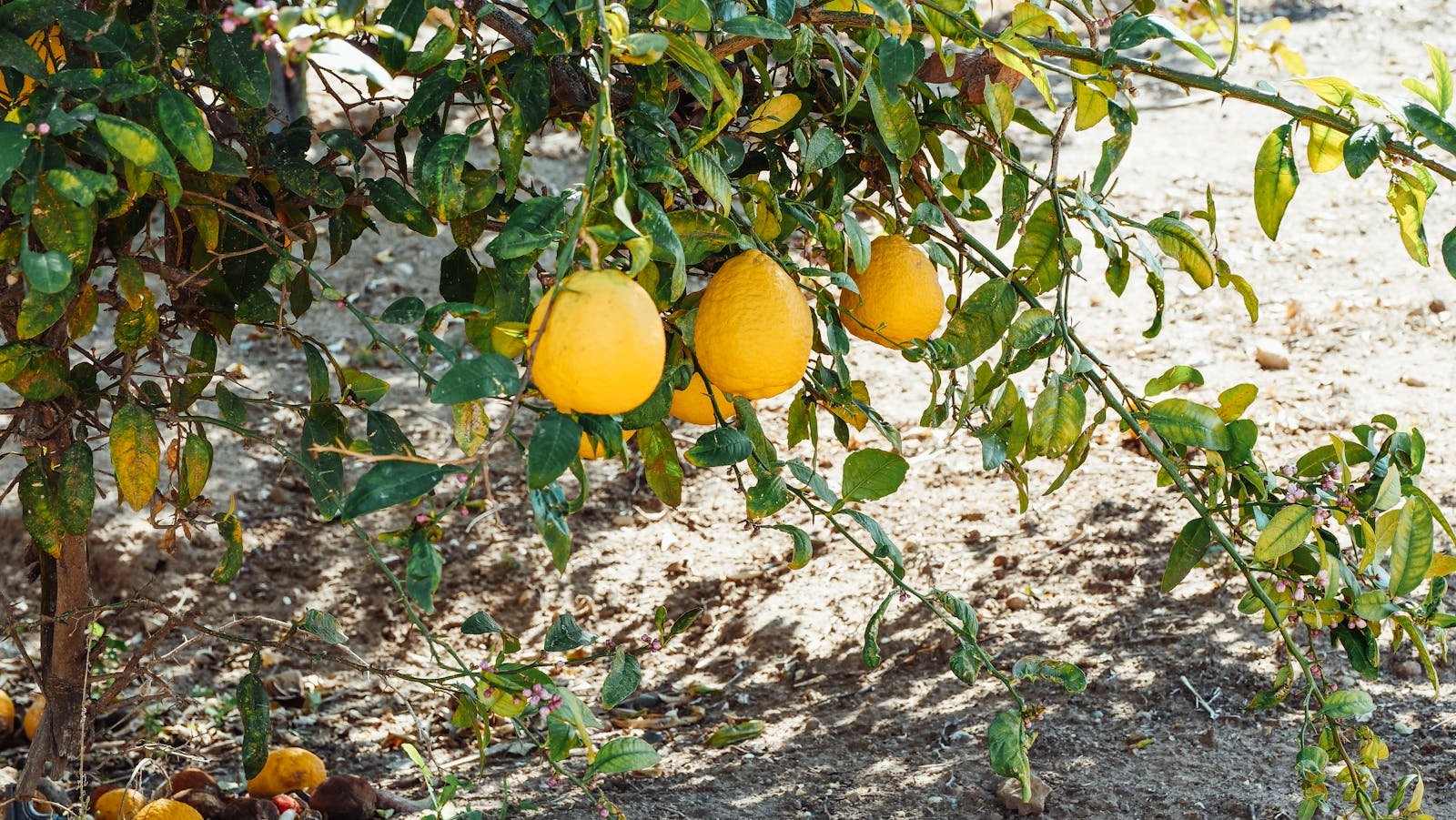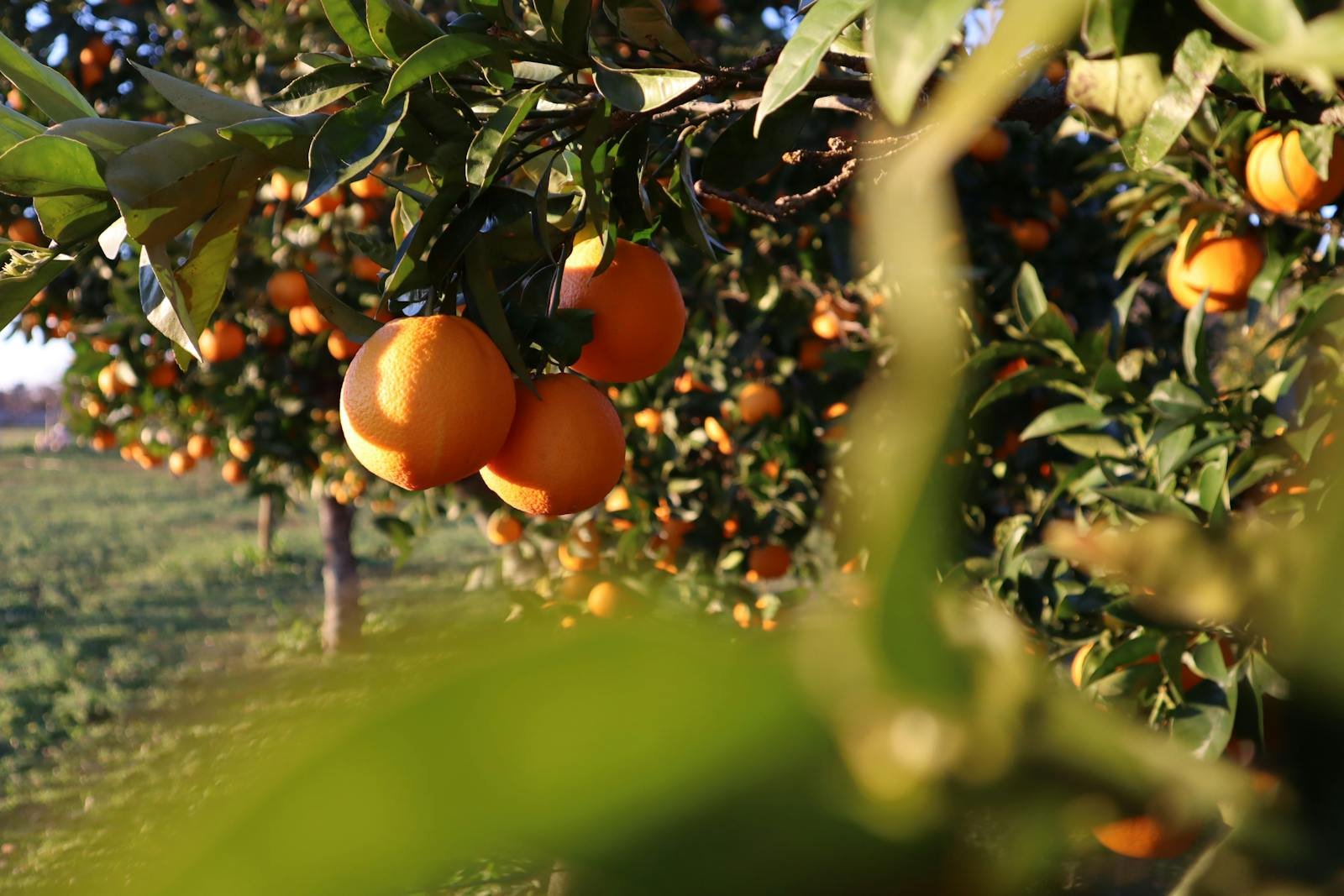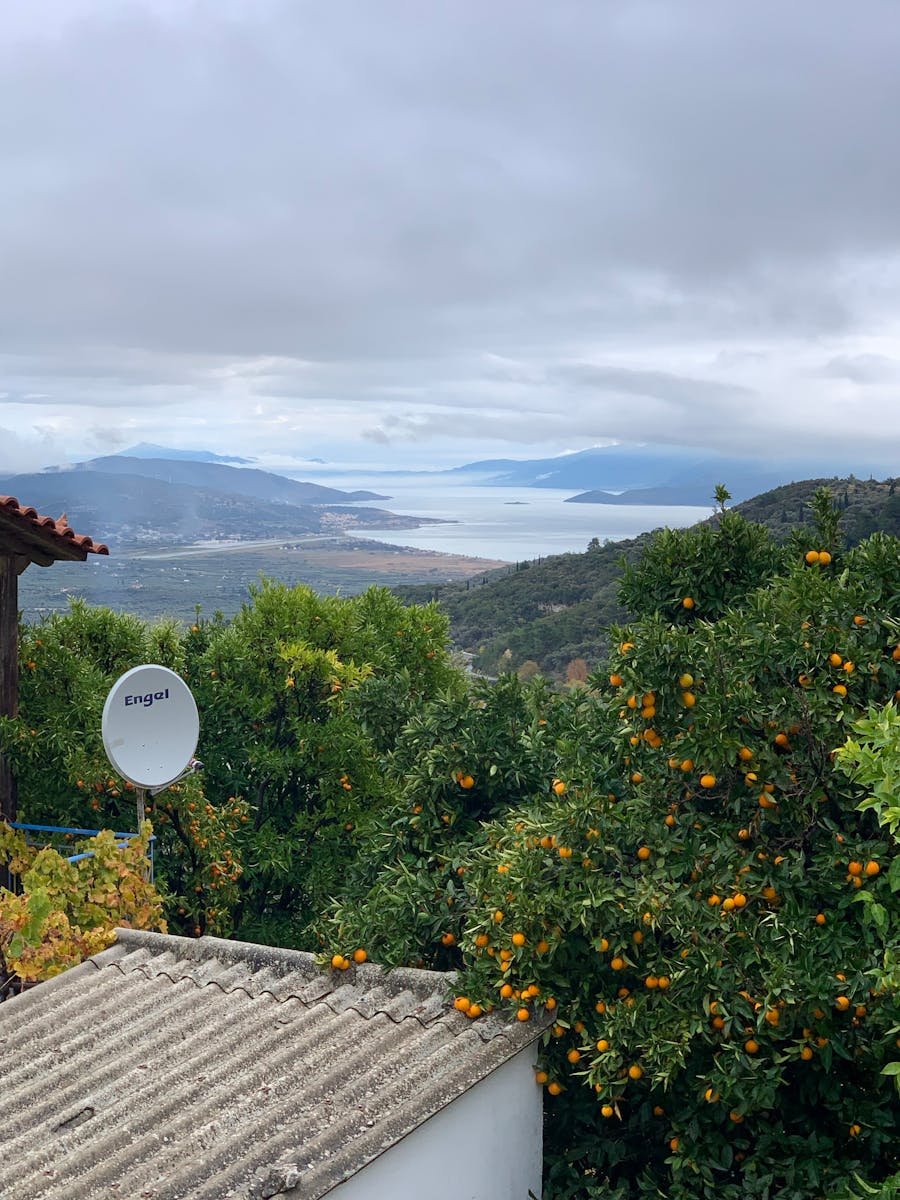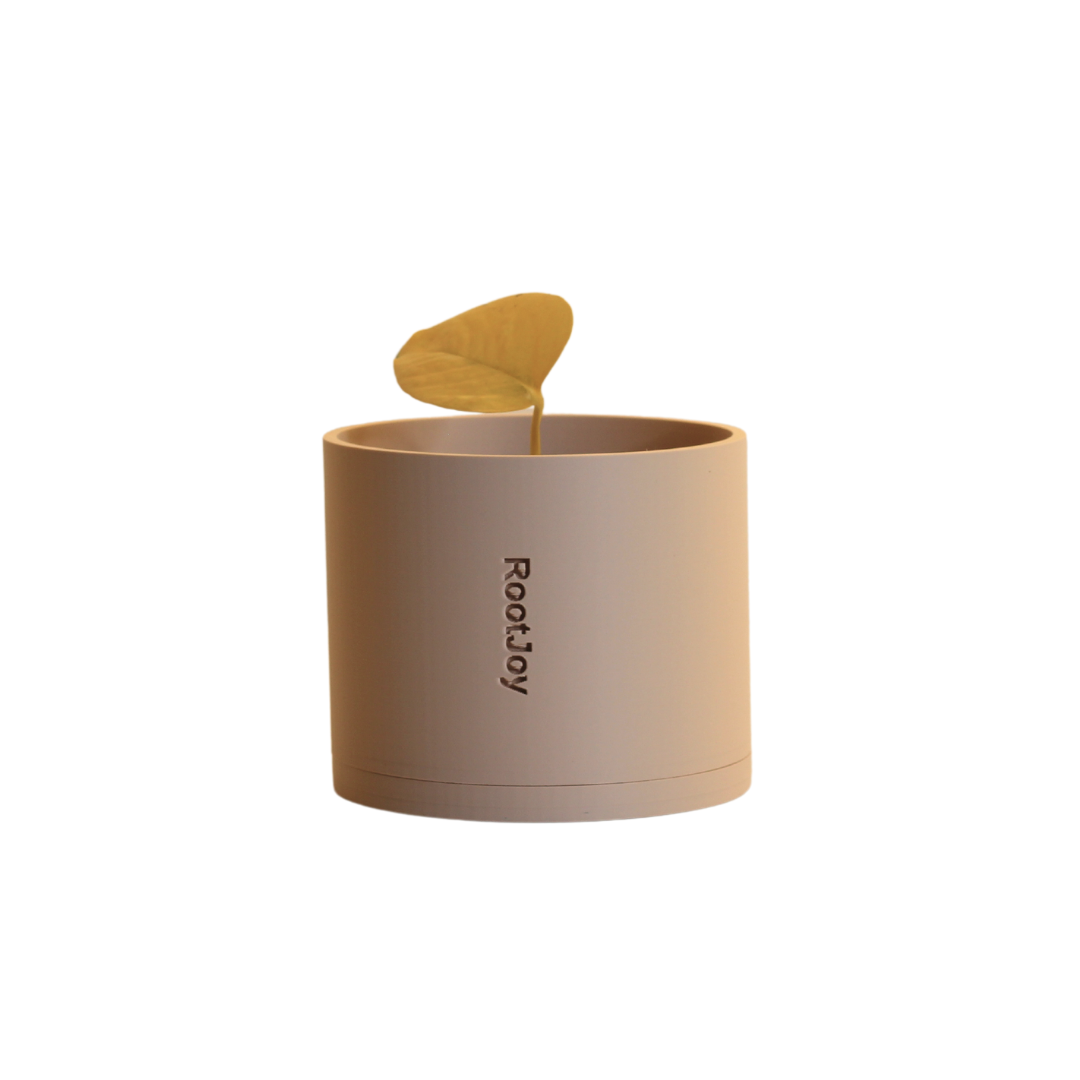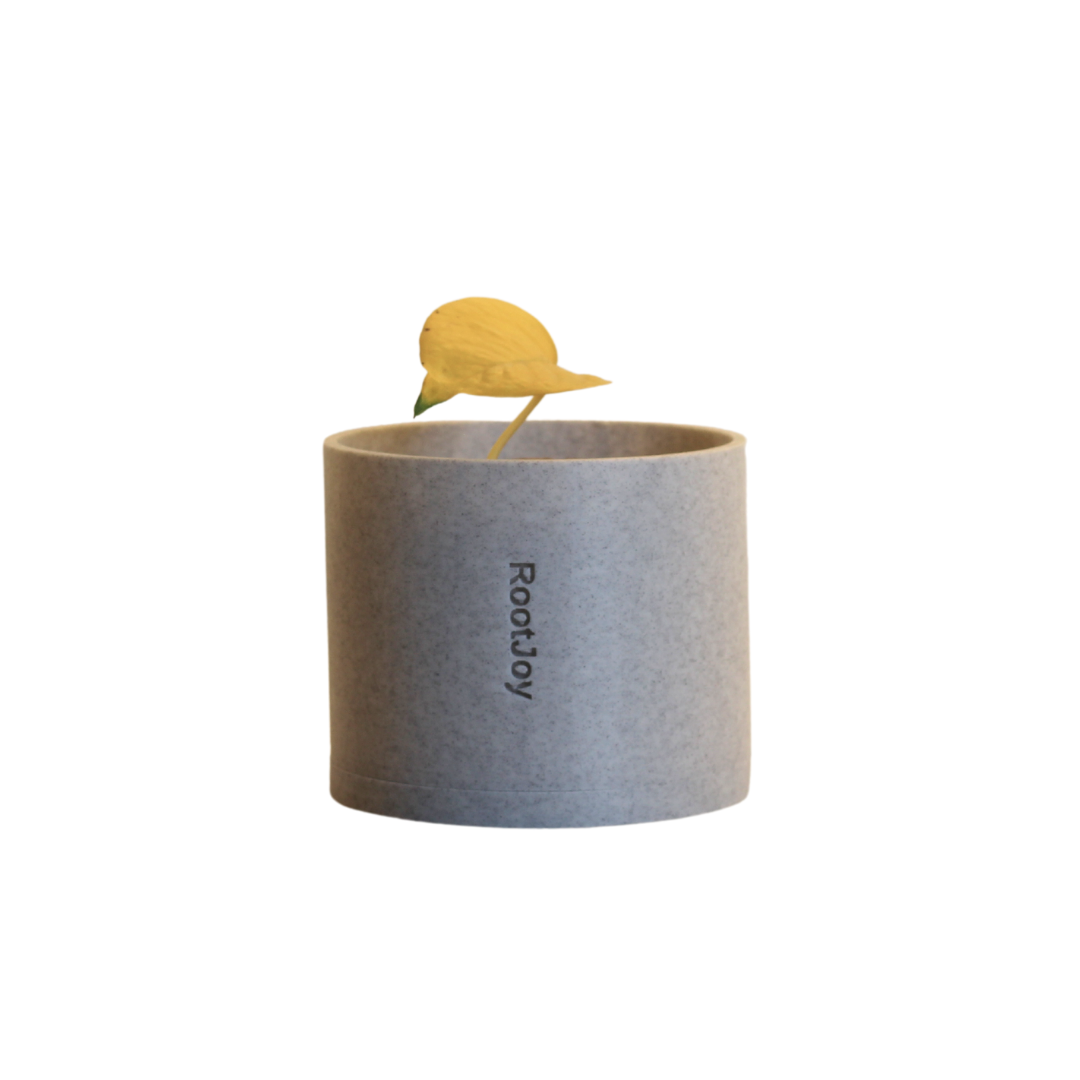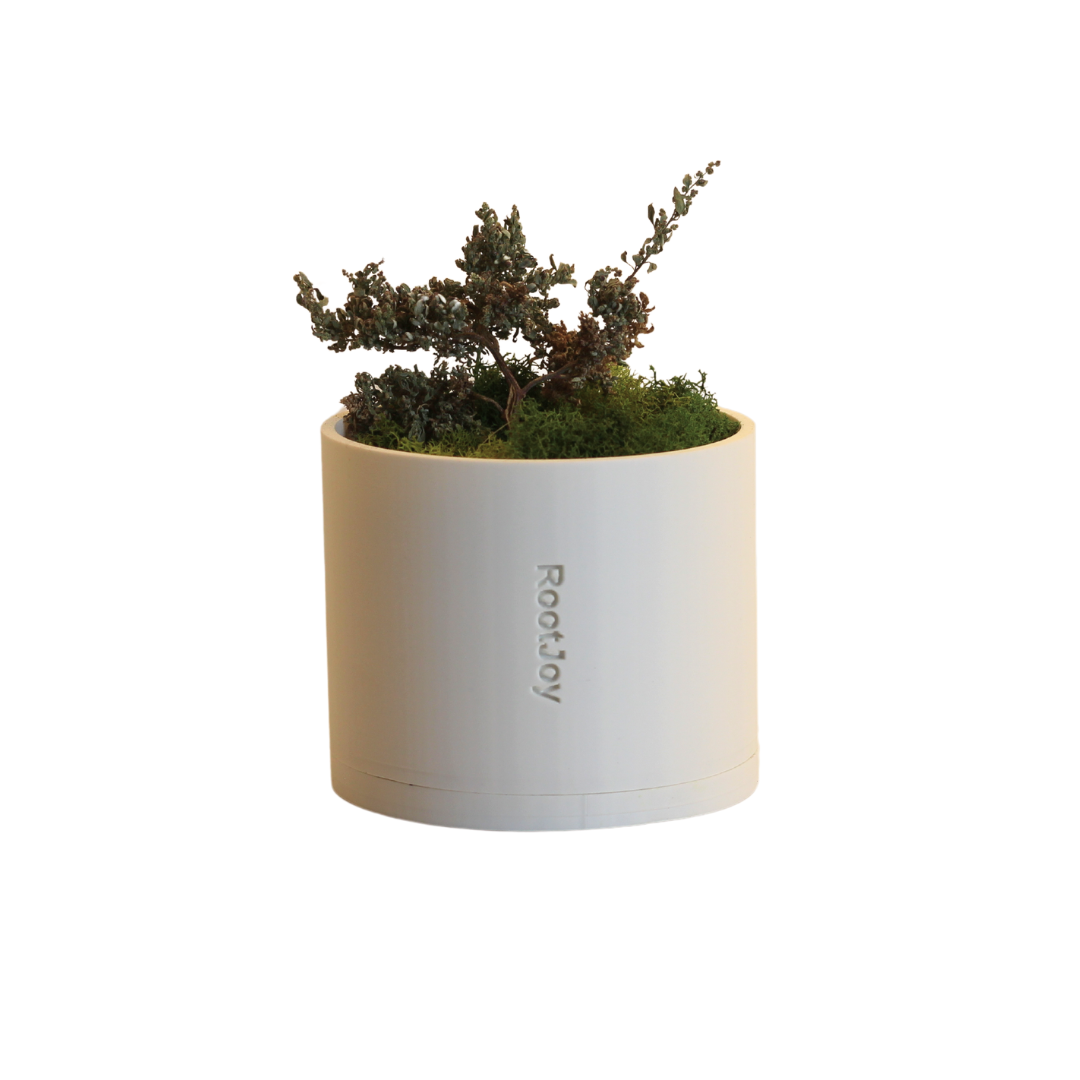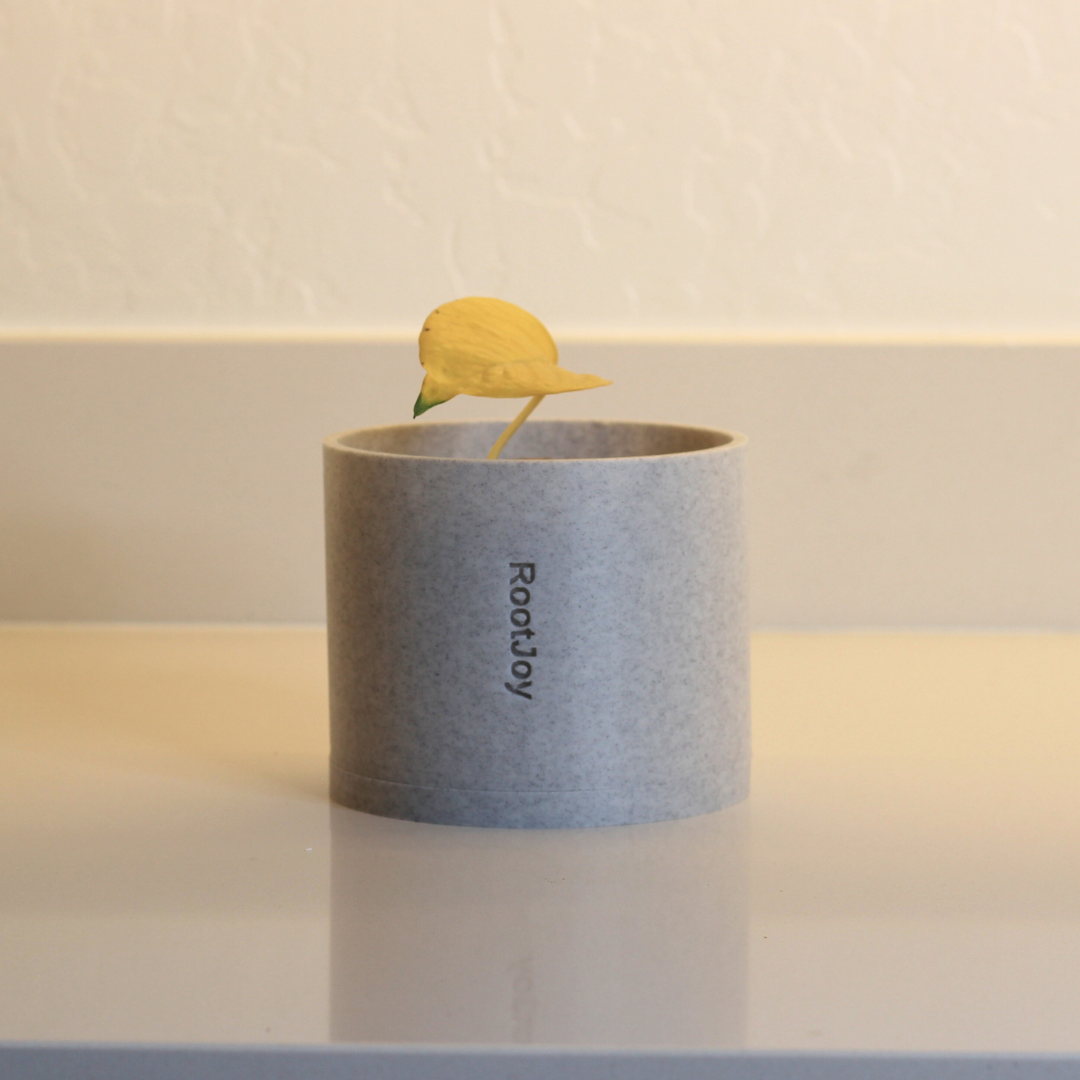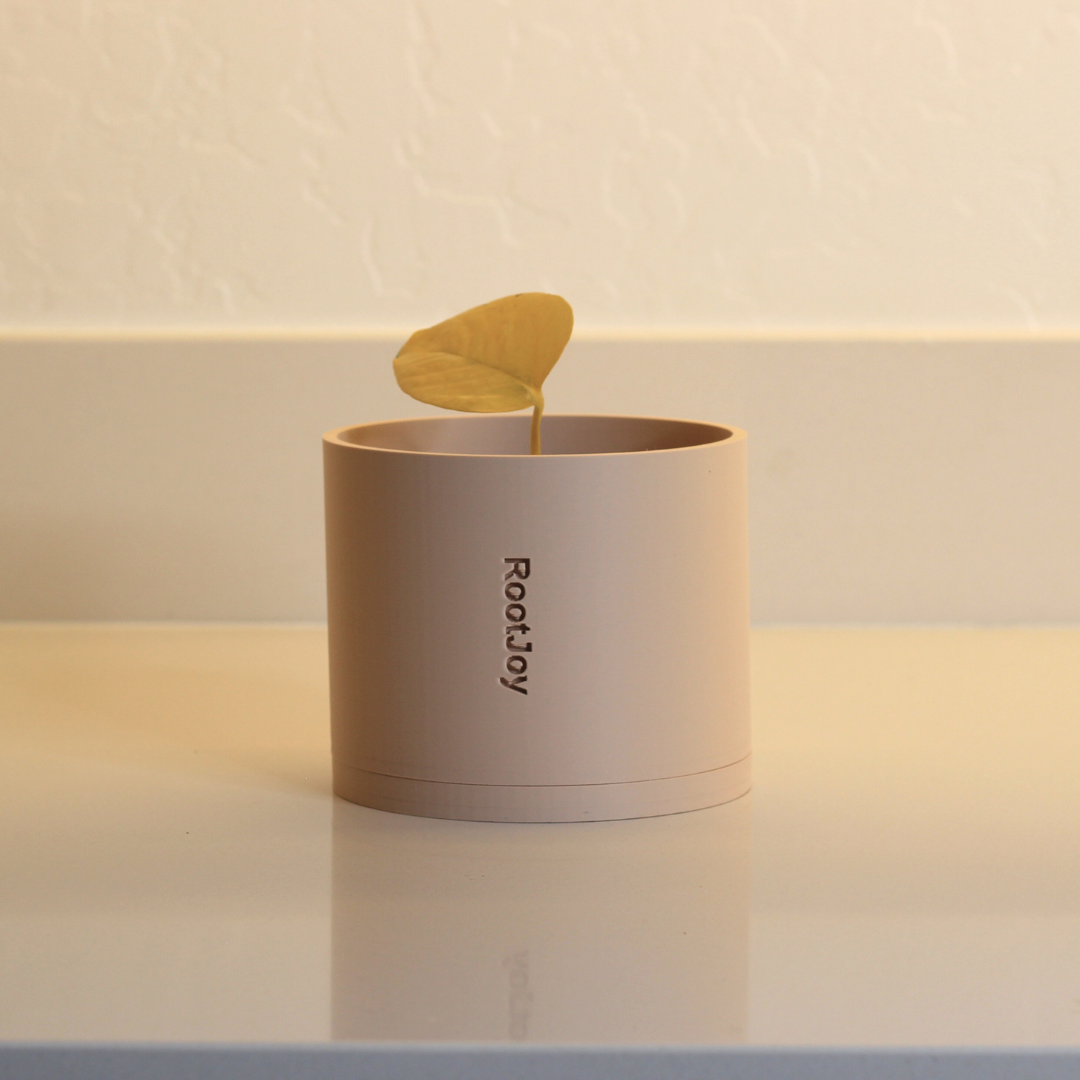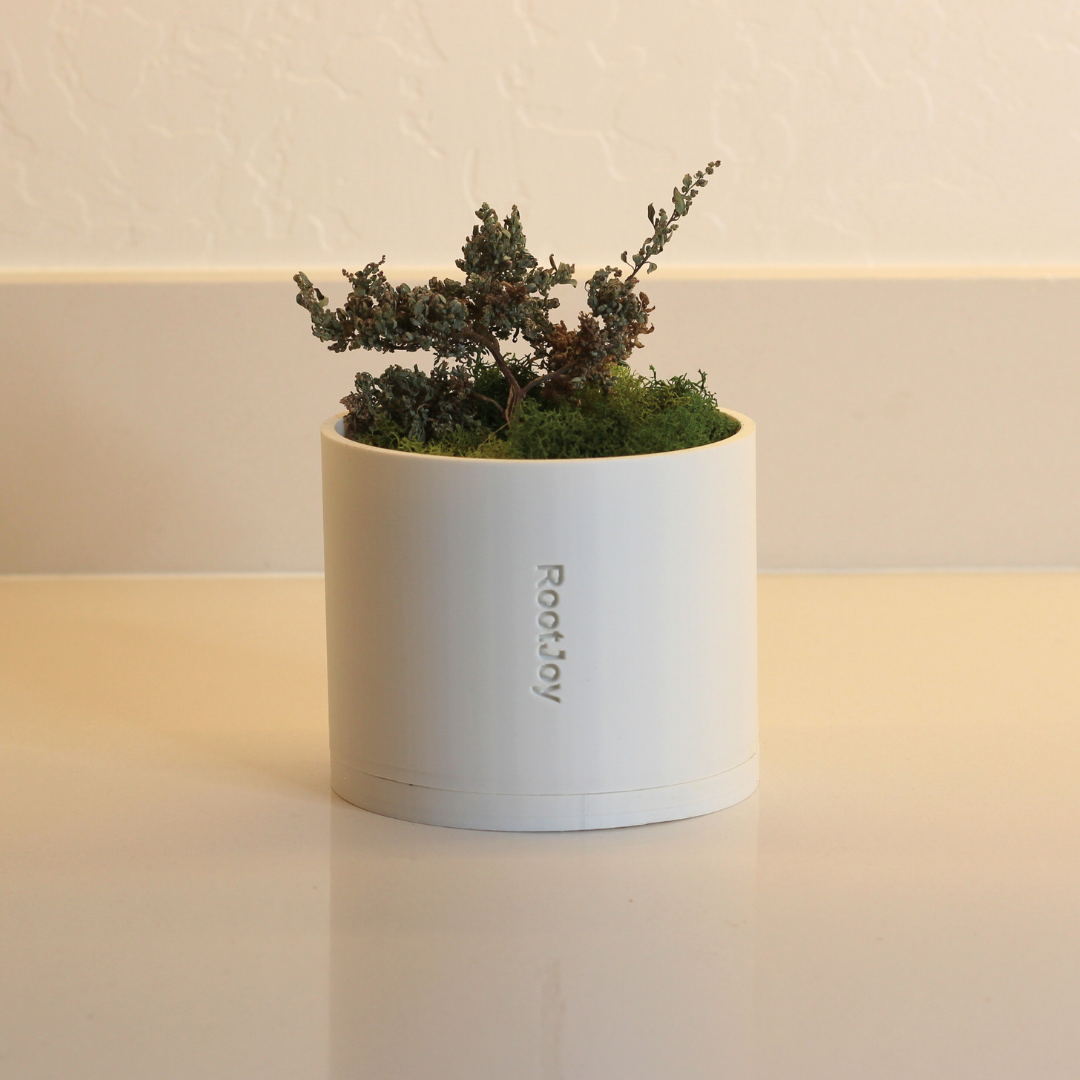Citrus Plants
🌱 Overall Growability Score
Discover how to grow and care for citrus plants with our complete guide. Learn about the best citrus varieties, planting tips, and maintenance practices for healthy, productive citrus trees.
Citrus Plants
🌱 Overall Growability Score
Discover how to grow and care for citrus plants with our complete guide. Learn about the best citrus varieties, planting tips, and maintenance practices for healthy, productive citrus trees.
Citrus Plants Insights
🌱 Overall Growability Score
🛒 Availability Score
🌿 Sustainability Score
📈 Yield Potential Score
☀️ Light Requirement Score
💧 Water Efficiency Score
🦠 Pest & Disease Resistance Score
❄️ Climate Adaptability Score
🪴 Space Efficiency Score
🌍 Rarity Score
💰 Cost Score
Overview:
Description
🍋 Choosing the Right Citrus Variety for Your Zone
🌱 Soil Preparation for Citrus Plants
Ensure well-draining, sandy-loam soil with a pH of 6.0-7.0. Enrich with compost or organic matter to improve fertility and water retention.
🌞 Ideal Sunlight Requirements for Citrus Trees
Citrus trees need full sun, about 6–8 hours daily. Place them in the brightest spot in your garden or balcony.
💧 How to Water Citrus Plants Properly
Water deeply once or twice a week, allowing the topsoil to dry slightly between sessions. Avoid overwatering to prevent root rot.
🪴 Growing Citrus in Containers
Choose large pots with drainage holes. Use lightweight potting mix, and rotate pots periodically to ensure even growth.
❄️ Protecting Citrus Plants from Frost
Cover plants with frost cloth or burlap during cold snaps. For container plants, move them indoors or to sheltered areas.
🍊 Pruning Techniques for Healthy Citrus Growth
Prune in late winter or early spring to remove dead branches and shape the tree for optimal airflow and sunlight exposure.
🌸 Encouraging Citrus Flowering and Pollination
Fertilize during blooming seasons and avoid over-pruning. Hand-pollinate flowers with a brush if natural pollinators are scarce.
🐝 Attracting Pollinators to Boost Citrus Fruit Production
Plant pollinator-friendly flowers like marigolds and lavender nearby to attract bees and butterflies.
🌡️ Managing Heat Stress in Citrus Trees
Use shade cloth during extreme heat and mulch to retain soil moisture. Ensure deep watering during heatwaves.
🛡️ Preventing Common Citrus Pests
Monitor for pests like aphids, scale, and citrus leaf miners. Use neem oil or introduce beneficial insects like ladybugs.
🍂 Natural Remedies for Citrus Diseases
Treat fungal infections like sooty mold with horticultural oils. Improve airflow through pruning to reduce disease risk.
🌾 Best Mulching Practices for Citrus Plants
Apply a 2–3 inch layer of organic mulch around the base to retain moisture, regulate temperature, and suppress weeds.
🥤 Fertilizing Citrus Plants for Maximum Yield
Feed citrus plants with a balanced fertilizer high in nitrogen during the growing season, typically every 6–8 weeks.
🌳 Supporting Heavy Fruit-Laden Citrus Branches
Use stakes or supports to prevent branches from breaking under the weight of heavy fruit.
🧪 Testing Soil pH for Optimal Citrus Growth
Regularly test soil pH and adjust with lime to raise it or sulfur to lower it, ensuring ideal conditions for nutrient absorption.
🍋 Signs Your Citrus Fruit is Ready for Harvest
Harvest when fruits are fully colored, aromatic, and slightly soft to the touch. Taste-test to ensure ripeness.
🌬️ Protecting Citrus Trees from Wind Damage
Plant in sheltered areas or use windbreaks like hedges. For young trees, use stakes to provide stability.
🌱 Propagating Citrus Plants from Cuttings
Take 6–8 inch cuttings from healthy branches. Dip in rooting hormone and plant in moist soil for best results.
🪵 Companion Plants to Pair with Citrus Trees
Plant herbs like basil, mint, or marigolds nearby to deter pests and attract beneficial insects.
🌦️ Seasonal Care Tips for Citrus Plants
- Spring: Prune and fertilize.
- Summer: Deep watering and pest monitoring.
- Fall: Apply mulch.
- Winter: Protect from frost.
🏡 Growing Indoor Citrus Plants Successfully
Use grow lights if natural sunlight is limited. Keep the temperature between 55–85°F and ensure proper humidity.
🐦 Protecting Citrus Fruits from Birds and Wildlife
Cover fruiting trees with bird netting to prevent wildlife from damaging the crop.
🛠️ Installing Drip Irrigation for Citrus Gardens
Set up a drip irrigation system to water directly at the roots, reducing water waste and preventing fungal issues.
🧼 DIY Solutions for Cleaning Citrus Leaves
Wipe leaves with a mix of water and a few drops of dish soap to remove dust, pests, and mold.
🔄 Rotating Container Citrus Plants for Even Growth
Turn pots every few weeks to ensure even sunlight exposure and balanced growth.
🎨 Designing Citrus Gardens for Aesthetic Appeal
Incorporate citrus trees as centerpieces in garden designs or use them in rows for a vibrant, structured layout.
🧑🌾 Managing Citrus Trees in Small Spaces
Grow dwarf varieties in pots or train them on trellises to save space while maintaining productivity.
🌾 Using Cover Crops Around Citrus Trees
Plant clover or vetch around trees to fix nitrogen in the soil and improve its health naturally.
🌟 Benefits of Growing Dwarf Citrus Varieties
Dwarf citrus trees are ideal for small spaces, produce full-sized fruits, and are easier to manage and harvest.
Climate and Growing Conditions for Citrus Plants
Citrus plants thrive in specific climates and growing conditions that mimic their natural habitats. Understanding these requirements is essential to growing healthy, productive trees that yield flavorful fruits.
1. Ideal Climate for Citrus Plants
- Tropical to Subtropical Zones: Citrus plants grow best in warm regions, typically USDA Zones 9-11. Some varieties, like kumquats, can tolerate cooler temperatures down to Zone 8.
- Temperature Range:
- Ideal daytime temperatures: 75–95°F (24–35°C).
- Minimum survival temperature: Citrus plants are sensitive to frost, with most varieties damaged below 28°F (-2°C).
- Humidity: Moderate to high humidity is beneficial, but good airflow is essential to prevent fungal diseases.
2. Sunlight Requirements
- Full Sun: Citrus plants need 6–8 hours of direct sunlight daily to produce high yields.
- Indoor Growth: If growing indoors, place citrus plants near a south-facing window or use grow lights to provide adequate light.
3. Soil Conditions
- Well-Drained Soil: Citrus plants dislike soggy roots, so choose sandy-loam soil with excellent drainage. Raised beds or pots can help prevent waterlogging.
- Soil pH: Maintain a slightly acidic to neutral pH of 6.0–7.0 for optimal nutrient absorption. Adjust pH with sulfur (to lower) or lime (to raise) as needed.
- Organic Matter: Add compost, aged manure, or organic fertilizers to enrich soil fertility and structure.
4. Watering Needs
- Deep, Consistent Watering: Water citrus trees deeply once or twice a week, allowing the soil to dry slightly between sessions.
- Drip Irrigation: Use drip systems to deliver water directly to the roots, reducing evaporation and promoting healthy growth.
5. Frost Protection
- Citrus plants are highly sensitive to frost and need protection in colder climates:
- Cover trees with frost cloths or burlap during cold nights.
- For container plants, move them indoors or to a sheltered area during freezing conditions.
6. Wind and Heat Stress
- Wind Protection: Use windbreaks or plant citrus in sheltered areas to protect them from strong gusts that can damage leaves and flowers.
- Heat Tolerance: While citrus plants can handle high temperatures, they need adequate watering and mulch to retain soil moisture and prevent stress during extreme heat.
7. Growing Citrus Indoors
- In regions with cold winters, grow citrus plants like Meyer lemons or calamondins indoors.
- Use well-draining pots, maintain a temperature between 55–85°F (13–29°C), and ensure proper humidity with a pebble tray or humidifier.
Summary
Citrus plants flourish in warm, sunny climates with well-drained, fertile soil and consistent care. By providing the right growing conditions and protecting plants from frost and pests, you can enjoy an abundant harvest of fresh, juicy citrus fruits. 🌱
Planting and Care Tips for Citrus Plants
Growing citrus plants successfully requires careful attention to planting and consistent care. Whether you’re cultivating lemons, oranges, or grapefruits, following these tips will ensure healthy growth and bountiful fruit production.
1. Planting Citrus Plants
- Timing:
- Plant citrus in early spring after the last frost or in fall in warmer climates.
- Location:
- Choose a spot with 6–8 hours of direct sunlight daily.
- Ensure the site has good airflow but is sheltered from strong winds.
- Soil Preparation:
- Use well-drained, sandy-loam soil enriched with compost or organic matter.
- Maintain a slightly acidic to neutral soil pH (6.0–7.0). Test and adjust as needed.
- Planting Depth:
- Dig a hole twice as wide as the root ball but no deeper than the roots.
- Avoid burying the trunk to prevent rot.
2. Watering Tips
- Consistency:
- Water deeply once or twice a week, allowing the topsoil to dry between sessions.
- Avoid Overwatering:
- Ensure soil is moist but not soggy to prevent root rot.
- Drip Irrigation:
- Install a drip irrigation system for efficient and even watering.
3. Fertilizing
- Frequency:
- Fertilize citrus plants every 6–8 weeks during the growing season (spring to early fall).
- Type:
- Use a balanced fertilizer high in nitrogen or a citrus-specific formula. Organic options like compost or fish emulsion are also beneficial.
- Application:
- Spread fertilizer evenly around the base, keeping it 6–12 inches away from the trunk.
4. Pruning and Maintenance
- Pruning:
- Prune citrus plants in late winter or early spring before new growth starts.
- Remove dead, damaged, or crossing branches to improve airflow and sunlight exposure.
- Mulching:
- Apply a 2–3 inch layer of mulch around the base to retain moisture, regulate soil temperature, and suppress weeds.
- Pest Monitoring:
- Regularly inspect for common citrus pests like aphids, scale, and mites. Use natural remedies like neem oil or beneficial insects to control infestations.
5. Frost Protection
- For Ground-Planted Trees:
- Cover trees with frost cloth or blankets on cold nights.
- For Potted Citrus:
- Move pots to a protected area like a greenhouse or indoors during freezing temperatures.
6. Growing Citrus in Containers
- Container Size:
- Use a pot that is at least 15–20 gallons with drainage holes.
- Soil Mix:
- Use lightweight, well-draining potting mix specifically for citrus or other fruit trees.
- Placement:
- Place the container in a sunny location and rotate it regularly for even growth.
7. General Care Tips
- Pollination:
- Encourage natural pollinators like bees by planting flowers nearby. For indoor plants, hand-pollinate flowers using a small brush.
- Support:
- Use stakes or ties to support young trees or heavy fruit-laden branches.
- Cleaning Leaves:
- Wipe leaves occasionally with a damp cloth to remove dust and improve photosynthesis.
By following these planting and care tips, your citrus plants will thrive and reward you with an abundance of fragrant blossoms and delicious fruits. 🌱🍋
Seasonal Planting and Harvesting for Citrus Plants
Citrus plants require strategic care throughout the year to ensure healthy growth and maximum fruit production. Understanding the planting and harvesting cycles for each season will help you manage your citrus garden effectively.
1. Spring: Planting and Active Growth
Ideal for: Planting new citrus trees and preparing for the growing season.
- Planting:
- Plant citrus trees in early spring once the risk of frost has passed.
- Enrich the soil with compost and ensure proper drainage.
- Fertilizing:
- Begin feeding citrus trees with a balanced or nitrogen-rich fertilizer.
- Pruning:
- Remove any dead or damaged branches to stimulate new growth.
- Tasks:
- Monitor for pests like aphids as new growth appears.
- Mulch around the base to retain moisture and suppress weeds.
2. Summer: Maintenance and Fruit Development
Ideal for: Ensuring steady water supply and pest control during fruit development.
- Watering:
- Deeply water once or twice a week, depending on weather conditions.
- Mulch to retain soil moisture during hot periods.
- Pest Control:
- Watch for pests such as mites, scale, and whiteflies. Use neem oil or introduce beneficial insects.
- Shading:
- Provide shade during extreme heat to prevent sunburn on fruits and leaves.
- Tasks:
- Thin out overcrowded fruit to improve the size and quality of the remaining crop.
3. Fall: Harvesting and Soil Preparation
Ideal for: Harvesting mature fruits and preparing trees for cooler weather.
- Harvesting:
- Early varieties, such as satsumas and Meyer lemons, are typically ready for picking.
- Harvest when fruits are fully colored and aromatic. Taste-test to ensure ripeness.
- Soil Care:
- Add organic matter to replenish nutrients.
- Mulching:
- Apply a fresh layer of mulch to protect roots during cooler months.
- Tasks:
- Prune lightly to remove dead branches and improve tree structure.
4. Winter: Dormancy and Frost Protection
Ideal for: Protecting citrus plants from frost and maintaining tree health.
- Frost Protection:
- Cover outdoor trees with frost cloth during cold nights.
- Move potted citrus trees to a sheltered area or indoors.
- Watering:
- Reduce watering frequency but ensure soil doesn’t dry out completely.
- Pruning:
- Avoid heavy pruning during dormancy; wait until spring for major cuts.
- Tasks:
- Clean up fallen leaves and debris to reduce pest and disease risks.
Harvesting Tips by Variety
| Variety | Harvest Season | Key Notes |
|---|---|---|
| Meyer Lemons | Fall to Winter | Pick when fruits are yellow and slightly soft. |
| Navel Oranges | Winter to Early Spring | Harvest when deep orange and firm. |
| Limes | Year-Round (in warm zones) | Pick when fully green and aromatic. |
| Grapefruits | Winter to Early Spring | Wait for full color and slightly softened skin. |
Summary
Citrus plants follow a year-round cycle, with planting and active growth in spring, maintenance and fruit development in summer, harvesting in fall, and dormancy in winter. By tailoring your care to each season, you’ll ensure a healthy, productive citrus garden that thrives year after year. 🍋🌱
Urban and Small-Space Citrus Gardening
Growing citrus plants in urban or small spaces is a rewarding way to enjoy fresh, homegrown fruits even in tight quarters. With the right techniques and tools, you can successfully cultivate lemons, oranges, limes, and other citrus varieties on balconies, rooftops, patios, or indoors.
1. Choosing the Right Citrus Varieties
- Dwarf and Compact Varieties:
- Opt for dwarf citrus trees like Meyer lemon, Key lime, or Calamondin orange, which are perfect for pots and limited spaces.
- Cold-Hardy Options:
- For cooler climates, choose cold-tolerant varieties such as kumquats or satsumas that can be grown in containers and moved indoors.
2. Container Gardening for Citrus Plants
- Container Size:
- Use a pot with a capacity of at least 15–20 gallons for ample root space.
- Ensure the container has drainage holes to prevent waterlogging.
- Soil Requirements:
- Use a lightweight, well-draining potting mix designed for citrus or fruiting plants.
- Mobility:
- Place pots on wheeled plant stands for easy movement to maximize sunlight exposure or protect from weather extremes.
3. Maximizing Sunlight in Small Spaces
- Outdoor Spaces:
- Position citrus plants in areas that receive at least 6–8 hours of direct sunlight daily, such as sunny balconies or patios.
- Indoor Growing:
- Place containers near south-facing windows or use grow lights to supplement natural light.
- Rooftop Gardens:
- Utilize rooftops for citrus gardening, but ensure adequate wind protection and consider the weight of pots.
4. Vertical Gardening Solutions
- Wall Trellises:
- Train small citrus varieties to grow against trellises or walls to save ground space while creating a striking visual effect.
- Hanging Planters:
- Use large hanging baskets for compact citrus plants like dwarf calamondins or ornamental oranges.
5. Managing Small-Space Challenges
- Watering in Containers:
- Containers dry out faster than ground soil, so check moisture levels frequently and water deeply when needed.
- Pruning:
- Regularly prune to control size, maintain shape, and improve airflow, especially in tight spaces.
- Fertilizing:
- Feed citrus plants with a balanced or citrus-specific fertilizer every 6–8 weeks during the growing season to support healthy growth and fruiting.
6. Protecting Citrus in Urban Environments
- Frost Protection:
- Move potted citrus indoors or to a sheltered area during cold snaps.
- Wind Shielding:
- Use windbreaks or place plants near walls to protect them from strong gusts common in urban areas.
7. Benefits of Small-Space Citrus Gardening
- Fresh Produce:
- Enjoy homegrown fruits year-round with proper care.
- Aromatic Appeal:
- Citrus blossoms add a pleasant fragrance to your living space.
- Space Efficiency:
- Compact and dwarf varieties make it possible to grow citrus plants anywhere.
Best Citrus Plants for Urban Spaces
| Plant | Why It Works |
|---|---|
| Meyer Lemon | Compact size, fragrant flowers, and abundant fruit. |
| Calamondin Orange | Thrives in pots and produces ornamental fruit. |
| Key Lime | Ideal for small containers and prolific yields. |
| Kumquat | Cold-hardy and perfect for urban climates. |
| Dwarf Grapefruit | Suitable for large pots and sunny patios. |
Urban and small-space citrus gardening allows you to bring the beauty and benefits of citrus plants into any environment, no matter how limited the space. With careful planning and maintenance, you can enjoy fresh, zesty fruits and fragrant blooms year-round. 🌱🍊
Sustainable Practices for Citrus Plant Gardening
Sustainable gardening focuses on growing citrus plants in an environmentally responsible way. By conserving resources, enhancing soil health, and minimizing chemical use, you can create a thriving citrus garden that supports both your plants and the planet.
1. Composting for Healthy Soil
- Why It’s Important: Compost enriches soil naturally, reducing the need for synthetic fertilizers.
- How to Do It:
- Compost kitchen scraps like fruit peels, coffee grounds, and eggshells.
- Use finished compost to amend soil for citrus plants.
2. Water Conservation
- Drip Irrigation:
- Install drip irrigation systems to deliver water directly to the roots, reducing evaporation and waste.
- Rainwater Harvesting:
- Collect rainwater in barrels to water citrus trees during dry spells.
- Mulching:
- Apply a 2–3 inch layer of organic mulch to retain soil moisture and regulate temperature.
3. Organic Fertilizers
- Compost and Manure:
- Use natural compost or aged manure to feed citrus plants.
- Natural Supplements:
- Apply bone meal or fish emulsion to boost nitrogen and phosphorus levels.
- Avoid Synthetic Fertilizers:
- They can harm beneficial soil organisms and contribute to water pollution.
4. Natural Pest Control
- Encourage Beneficial Insects:
- Attract ladybugs, lacewings, and hoverflies to manage aphids and scale naturally.
- Neem Oil Sprays:
- Use neem oil to deter pests without harming pollinators.
- Companion Planting:
- Grow marigolds, nasturtiums, or garlic near citrus plants to repel pests.
5. Biodiversity and Pollinator Support
- Plant Diversity:
- Add native flowers or shrubs around citrus trees to promote biodiversity.
- Pollinator Habitats:
- Create spaces for bees and butterflies with water sources and undisturbed areas.
- Avoid Pesticides:
- Steer clear of chemical pesticides that harm pollinators and other beneficial organisms.
6. Renewable Resources for Plant Care
- Reusable Containers:
- Use long-lasting, eco-friendly pots for container citrus gardening.
- DIY Trellises and Supports:
- Build plant supports from reclaimed wood or other upcycled materials.
- Solar-Powered Tools:
- Use solar-powered lights or irrigation timers for eco-friendly energy use.
7. Soil Health and Regeneration
- Cover Crops:
- Plant cover crops like clover around citrus trees to fix nitrogen and improve soil fertility.
- No-Till Gardening:
- Minimize soil disturbance to preserve beneficial microorganisms.
8. Frost and Heat Management
- Eco-Friendly Frost Protection:
- Use reusable frost cloths or natural materials like straw to protect trees during cold snaps.
- Shade Solutions:
- Use lightweight, biodegradable shade cloth to shield plants from extreme heat.
9. Minimal Waste Practices
- Reuse and Recycle:
- Repurpose household items like old buckets or crates as planters.
- Zero-Waste Gardening:
- Turn all pruning clippings and fallen leaves into compost.
10. Long-Term Planning
- Perennial Citrus Plants:
- Invest in perennial citrus trees that produce fruit year after year with proper care.
- Smart Spacing:
- Plant trees with adequate spacing to ensure long-term health and easier maintenance.
Benefits of Sustainable Citrus Gardening
- Environmental Impact: Reduces water use, chemical runoff, and soil degradation.
- Healthy Produce: Enjoy pesticide-free fruits that are safe for your family.
- Cost Savings: Composting and water conservation reduce reliance on costly inputs.
- Biodiversity: Supports local ecosystems and beneficial wildlife.
By adopting sustainable practices, you can grow thriving citrus plants while contributing to a healthier environment and a more resilient garden. 🌱🍋
Tools and Products for Successful Citrus Plant Gardening
Equipping yourself with the right tools and resources is essential for cultivating healthy and productive citrus plants. From must-have gardening tools to expert guides, here’s everything you need to support your citrus-growing journey.
1. Essential Gardening Tools
- Pruning Shears:
- Essential for maintaining healthy citrus plants by removing dead or diseased branches and shaping the tree for optimal growth.
- Watering Tools:
- Use a watering can or a drip irrigation system to provide consistent moisture without overwatering.
- Soil Test Kits:
- Monitor soil pH and nutrient levels to ensure the perfect growing conditions for citrus trees.
- Mulch Spreaders:
- Make it easier to evenly distribute organic mulch around the base of your trees.
- Garden Gloves:
- Protect your hands during planting, pruning, or pest control tasks.
2. Products for Soil and Plant Health
- Organic Fertilizers:
- Use citrus-specific fertilizers rich in nitrogen for strong growth and abundant fruiting. Look for organic options like fish emulsion or compost-based formulas.
- Mulch:
- Organic mulches like bark chips, straw, or shredded leaves help retain moisture and regulate soil temperature.
- Natural Pest Control Products:
- Neem oil and insecticidal soaps are eco-friendly ways to keep pests like aphids and scale in check.
3. Tools for Urban and Small-Space Citrus Gardening
- Large Pots or Containers:
- Choose durable, lightweight containers with proper drainage for dwarf citrus varieties.
- Plant Stands with Wheels:
- Easily move container-grown citrus trees to follow sunlight or protect them from frost.
- Trellises:
- Ideal for training climbing or espaliered citrus plants, especially in compact gardens.
4. Must-Have Reading for Citrus Growers
Expand your knowledge and refine your gardening techniques with these expert guides:
- Grow Food eBook:
A beginner-friendly guide to growing your own food, including citrus plants, with actionable tips and strategies. - Urban Farming eBook:
Perfect for small-space gardeners, this eBook covers innovative methods like container gardening and maximizing yields in limited areas. - Sustainable Agriculture eBook:
Learn eco-friendly gardening practices to grow citrus sustainably while preserving soil health and conserving resources.
5. Planning and Maintenance Tools
- Garden Planner Apps:
- Use apps to schedule planting, watering, and fertilizing tasks, ensuring no steps are missed.
- Weather Monitors:
- Track temperature and rainfall to protect citrus plants from frost or excessive heat.
Challenges and Solutions for Citrus Plant Gardening
Growing citrus plants can be rewarding, but gardeners often face unique challenges. From environmental factors to pest and disease management, understanding these hurdles and implementing effective solutions will help you maintain healthy, productive trees.
1. Pest Infestations
Challenge: Citrus plants are prone to pests such as aphids, scale, spider mites, and citrus leaf miners, which can damage leaves, flowers, and fruits.
Solution:
- Natural Remedies: Use neem oil or insecticidal soap to control pests without harming beneficial insects.
- Encourage Beneficial Insects: Attract ladybugs and lacewings to naturally manage pest populations.
- Regular Monitoring: Inspect your plants regularly and act at the first sign of infestation.
2. Nutrient Deficiencies
Challenge: Yellowing leaves, stunted growth, or poor fruit production can signal nutrient deficiencies, such as lack of nitrogen, magnesium, or zinc.
Solution:
- Soil Testing: Regularly test your soil to identify deficiencies and adjust accordingly.
- Fertilization: Apply a balanced citrus-specific fertilizer rich in nitrogen, phosphorus, and potassium. Add magnesium sulfate (Epsom salts) or zinc supplements if needed.
3. Frost Damage
Challenge: Citrus plants are highly sensitive to frost, which can cause leaf drop, branch dieback, or even plant death.
Solution:
- Frost Covers: Use frost cloth or burlap to cover plants during cold nights.
- Container Gardening: Grow citrus in pots so you can move them indoors during freezing conditions.
- Mulching: Apply mulch around the base to insulate roots.
4. Poor Soil Drainage
Challenge: Citrus plants require well-drained soil. Waterlogged conditions can lead to root rot and other diseases.
Solution:
- Improve Drainage: Plant in raised beds or containers with well-draining soil mixes.
- Adjust Watering: Allow the topsoil to dry between watering sessions to prevent overwatering.
5. Inconsistent Watering
Challenge: Citrus plants are sensitive to irregular watering, which can cause fruit splitting or drop.
Solution:
- Deep Watering: Water deeply and consistently, typically once or twice a week, depending on the climate.
- Drip Irrigation: Install a drip irrigation system to provide steady moisture directly to the roots.
6. Lack of Pollination
Challenge: Poor pollination results in low fruit production, especially in areas with limited pollinator activity.
Solution:
- Hand Pollination: Use a small brush to transfer pollen between flowers.
- Pollinator-Friendly Plants: Plant lavender, marigolds, or other pollinator-attracting flowers near your citrus trees.
7. Fungal Diseases
Challenge: Citrus plants are vulnerable to fungal infections like sooty mold, root rot, or citrus canker, which can damage foliage and reduce yields.
Solution:
- Air Circulation: Prune trees to improve airflow and reduce humidity around leaves.
- Proper Watering: Avoid overhead watering to minimize moisture on leaves.
- Natural Treatments: Use copper-based fungicides to treat fungal issues.
8. Sunburn and Heat Stress
Challenge: High temperatures and direct sunlight can cause sunburn on citrus leaves and fruit, leading to discoloration and reduced quality.
Solution:
- Shade Cloth: Use shade cloth to protect plants during heatwaves.
- Mulching: Apply mulch to retain soil moisture and keep roots cool.
9. Wildlife and Bird Damage
Challenge: Birds and small animals can peck at or eat ripening citrus fruits.
Solution:
- Netting: Cover trees with bird netting to protect fruits.
- Scare Devices: Use reflective tape, wind chimes, or other deterrents to scare away wildlife.
10. Limited Space in Urban Areas
Challenge: Space constraints in urban environments make it challenging to grow large citrus trees.
Solution:
- Dwarf Varieties: Grow compact citrus trees like Meyer lemon or Key lime in containers.
- Vertical Gardening: Train trees against walls or trellises to save space.
Summary
Every gardening challenge has a solution when it comes to citrus plants. With proper planning, consistent care, and natural remedies, you can overcome these obstacles and enjoy the beauty and bounty of healthy, fruit-bearing citrus trees. 🌱🍋
Citrus Plants Gardening FAQs
1. What are the best citrus plants for beginners?
Answer:
Beginner-friendly citrus plants include Meyer lemon, Key lime, and Calamondin orange. These varieties are hardy, productive, and easy to grow in containers or small spaces.
2. How much sunlight do citrus plants need?
Answer:
Citrus plants require 6–8 hours of direct sunlight daily. For indoor plants, place them near a sunny window or use grow lights to provide adequate light.
3. Can citrus plants grow in cold climates?
Answer:
Citrus plants are sensitive to frost but can thrive in cold climates if grown in containers and moved indoors during winter. Cold-hardy varieties like kumquats and satsumas can tolerate cooler temperatures.
4. How often should I water citrus plants?
Answer:
Water deeply once or twice a week, depending on weather and soil conditions. Allow the topsoil to dry slightly between watering to prevent root rot.
5. What type of soil is best for citrus plants?
Answer:
Citrus plants prefer well-drained, sandy-loam soil with a pH of 6.0–7.0. Enrich the soil with organic matter like compost for better fertility and structure.
6. Can I grow citrus plants in containers?
Answer:
Yes, citrus plants like Meyer lemons and dwarf oranges thrive in containers. Use large pots (15–20 gallons) with drainage holes and lightweight, well-draining potting mix.
7. How do I fertilize citrus plants?
Answer:
Feed citrus plants with a balanced fertilizer high in nitrogen every 6–8 weeks during the growing season (spring through early fall). Organic options like compost or fish emulsion work well too.
8. How can I protect citrus plants from frost?
Answer:
Cover outdoor plants with frost cloth or burlap during cold nights. For container plants, move them indoors or to a sheltered location.
9. When is the best time to plant citrus trees?
Answer:
Plant citrus trees in early spring after the last frost, or in fall in warm climates to allow roots to establish before winter.
10. How do I prune citrus plants?
Answer:
Prune in late winter or early spring before new growth begins. Remove dead, damaged, or crossing branches to improve airflow and sunlight exposure.
11. How can I prevent pests on citrus plants?
Answer:
Use neem oil or insecticidal soap to manage pests like aphids, scale, and spider mites. Attract beneficial insects such as ladybugs to naturally control pest populations.
12. How do I know when citrus fruits are ready to harvest?
Answer:
Fruits are ready when they are fully colored, aromatic, and slightly soft to the touch. Taste-test one to confirm ripeness before harvesting the rest.
13. Do I need multiple citrus trees for fruit production?
Answer:
Most citrus plants are self-pollinating, so you only need one tree to produce fruit. However, having multiple trees can increase yield and improve cross-pollination.
14. What’s the best way to grow citrus indoors?
Answer:
Place the plant in a sunny spot near a south-facing window or use grow lights. Maintain a temperature between 55–85°F and ensure good drainage in the pot.
15. How can I prevent citrus leaves from yellowing?
Answer:
Yellowing leaves can indicate nutrient deficiencies, overwatering, or pests. Check soil pH and nutrient levels, adjust watering habits, and inspect for pest damage.
16. Can I grow citrus plants from seeds?
Answer:
Yes, but seed-grown citrus plants may take 5–10 years to produce fruit and may not resemble the parent tree. For faster results, grow citrus from cuttings or purchase grafted trees.
17. What are common diseases in citrus plants, and how do I treat them?
Answer:
- Sooty Mold: Wipe leaves with a damp cloth and treat underlying pest issues like aphids.
- Citrus Canker: Remove infected branches and use copper-based fungicides.
- Root Rot: Improve drainage and reduce watering frequency.
18. Can I grow citrus plants in small spaces?
Answer:
Yes! Dwarf citrus varieties like Meyer lemon or Key lime are perfect for small spaces and thrive in containers.
19. How do I attract pollinators to citrus plants?
Answer:
Plant pollinator-friendly flowers such as lavender or marigolds near your citrus trees. Provide water sources to encourage bees and butterflies.
20. What are the benefits of growing dwarf citrus trees?
Answer:
Dwarf citrus trees are compact, easier to manage, and suitable for containers or small gardens. They produce full-sized fruit with proper care.
Citrus Plants Finder
Sign up for Flobase Interactive
Explore the interactive world of flipbooks, eBooks, audiobooks and courses and join the global and personal growth revolution.
Gardening Citrus Plants and More
Get notified on when we post new plant types and more.
Citrus Plants Calendar 📅
| Citrus Variety | Planting Season | Harvest Season | Notes |
|---|---|---|---|
| Meyer Lemon | Spring or Fall | Fall to Winter | Cold-hardy; great for containers and small spaces. |
| Navel Orange | Spring | Winter to Early Spring | Requires full sun; self-pollinating. |
| Key Lime | Spring | Year-Round (in warm climates) | Thrives in containers; sensitive to frost. |
| Grapefruit | Spring | Winter to Early Spring | Prefers well-draining soil and consistent watering. |
| Kumquat | Spring | Late Fall to Winter | Cold-hardy; excellent for fresh eating or preserves. |
| Mandarin | Spring | Fall to Winter | Easy to peel; great for fresh snacking. |
| Blood Orange | Spring | Winter to Early Spring | Rich in antioxidants; thrives in mild winters. |
Gardening Methods for Citrus Plants
Gardening Designs With Citrus Plants
Garden Themes With Citrus Plants
Best Cities for Citrus Plants
Gardening Seasons For Citrus Plants
Reviews of Citrus Plants
There are no reviews yet. Be the first one to write one.




